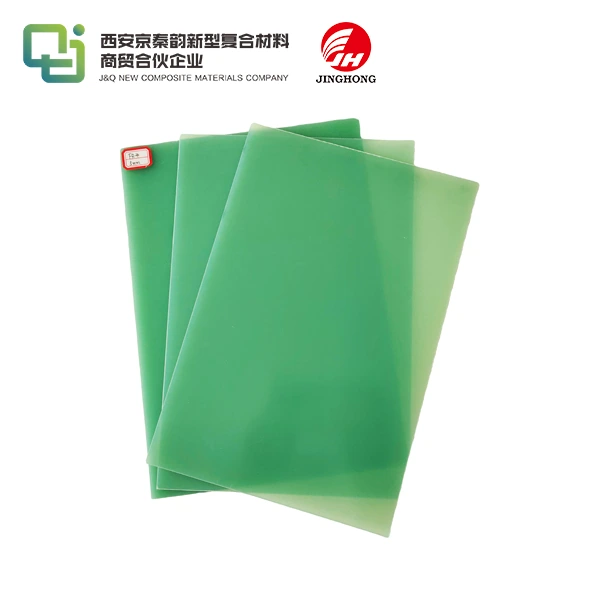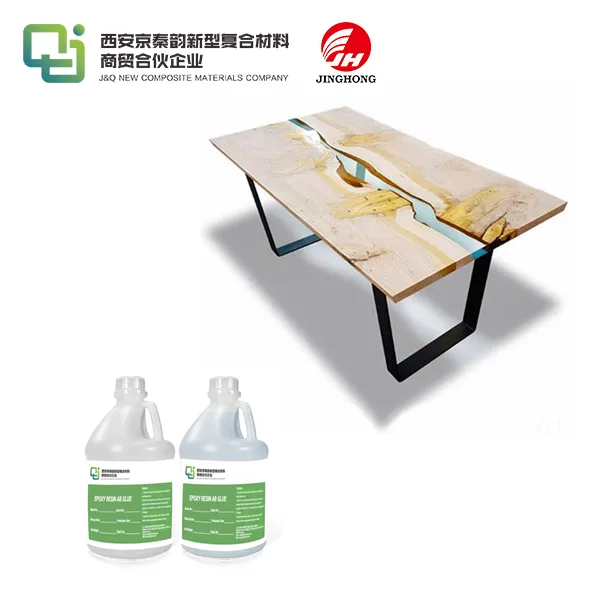Epoxy Resin Market Analysis and Applications in Five Major Fields
2024-06-28 14:00:21
The epoxy resin industry is one of the earliest industrial sectors to benefit from global industrialization.
With rapid economic growth in China, demand for epoxy resin has surged. In recent years, the country has introduced advanced foreign production technologies and processing equipment, facilitating rapid industry growth. Today, China stands as one of the world's largest producers and consumers of epoxy resin.
As of 2021, China's epoxy resin production capacity reached approximately 2.49 million tons per year, a 7.6% increase year-on-year, with output around 1.94 million tons, marking an 11.2% growth. The industry's overall operating rate has risen to 77.9%, the highest in nearly a decade. Clearly, epoxy resin applications across various sectors of the chemical industry are steadily increasing.
Given its substantial market demand, what exactly is epoxy resin and where is it applied?
Epoxy resin materials are traditionally used as epoxy active diluents and continue to dominate this field due to their excellent physical, mechanical, and electrical insulation properties, adhesion to various materials, and flexible processing methods. Consequently, they are used extensively in coatings, composite materials, casting materials, adhesives, molding materials, and injection molding materials across various sectors of the national economy.
1. Coatings Applications
Epoxy resin plays a significant role in coatings, forming a variety of distinctive and specialized products. Common characteristics include:
- Excellent chemical resistance, especially alkaline resistance.
- Strong film adhesion, particularly on metals.
- Good heat and electrical insulation properties.
- Excellent color retention.
However, Bisphenol A type epoxy resin coatings exhibit poor weather resistance, prone to chalking and loss of gloss outdoors, making them unsuitable for decorative and high-decorative outdoor coatings. Therefore, epoxy resin coatings are primarily used as anticorrosive paints, metal primers, and insulating paints, though coatings made from cycloaliphatic and fatty epoxy resins can be used outdoors.
2. Adhesives Applications
Epoxy resin demonstrates excellent bonding capabilities with various materials such as metals (aluminum, steel, iron, copper), non-metal materials (glass, wood, concrete), and thermosetting plastics (phenolic, amino, unsaturated polyester), except for polyolefins and other non-polar plastics, earning it the moniker of "universal adhesive." Epoxy adhesives are crucial in structural bonding applications.
The main uses of epoxy resin adhesives:
|
Application |
Bonded materials |
Main feature |
Main application |
|
civil construction |
concrete, wood, metal, glass, thermoset Plastic |
Low viscosity, curing on wet surfaces (or in water), low temperature curing Properties |
Concrete repair (joining of old and new surfaces), repair of cracks in external walls, bonding of panels, connection of sewer pipes, bonding of floors, reinforcement of building structures. |
|
electrical and electronic equipment |
Metal, porcelain, glass, FRP, and other potential solids. Potentially solid plastics |
Electrical insulation, humidity resistance, thermal shock resistance, heat resistance, low Corrosivity |
Electronic Components, Integrated Circuits, LCDs, CD-ROMs, Speakers, Magnetic Heads, Iron Cores, Battery Cases, Parabolic Antennae Printed Circuit Board |
|
aerospace |
Metal, thermoset plastic, FP (fiber reinforced plastic) |
Resistant to heat, impact, humidity, fatigue and radiation rays |
Bonding of homogeneous and heterogeneous metals, bonding of honeycomb cores and metals, composite materials, distribution panels Bonding |
|
vehicle mechanics |
Metal, Thermoset Plastic, FRP |
Moisture resistance, Rust prevention, Oil adhesion, Wear durability (fatigue properties) |
Body bonding, thin steel plate strengthening, FRP bonding, repair and installation of mechanical structures |
|
sporting goods |
Metal, Wood, Glass, Thermoset Plastic, FRP |
Durability, impact resistance |
Skis, golf clubs, tennis rackets |
|
other |
Metal, Glass, Ceramic |
Low toxicity, no yellowing |
Artifact repair, home use |
3.Electronic and electrical materials
Due to the many unique advantages of epoxy resin such as high insulating property, high structural strength and good sealing performance, it has been widely used in the insulation and encapsulation of high and low voltage electrical appliances, motors and electronic components, and is developing rapidly. Mainly used for:
(1) Pouring of electrical appliances, motor insulation and encapsulation parts. Such as solenoids, contactor coils, mutual inductors, dry-type transformers and other high and low voltage electrical appliances, such as the manufacture of the whole fully sealed insulation package. In the electrical appliances industry has been rapid development. From atmospheric pressure casting, vacuum casting has developed to automatic pressure gel molding.
The main uses of epoxy adhesives in civil engineering construction
|
Type of works |
Bonding Objects |
Typical use |
Major component |
|
Infrastructure |
Rock-rock |
Reinforcement of loose rock strata, foundation reinforcement, pre-embedded bolts and footings, etc., columns, pile heads, joints, cantilever beam thickening, bridge reinforcement pavement facility laying |
Epoxy-diluent-modified amine |
|
Metal-stone or concrete |
Epoxy-filler-modified amine |
||
|
Meta-concrete |
Bisphenol S epoxy monoglycidylamine resin and butyl rubber with modified amine |
||
|
Metal-metal |
|
||
|
ground |
Porcelain, granite- concrete |
Sticky structure and hooking in the manufacture of corrosion-resistant flooring; anti-slip and landscaping of floors, purification; flooring of floors |
Epoxy-filler modified amine |
|
Metal-concrete |
Epoxy-polysulfide rubber-modified amine |
||
|
Sand and gravel -Concrete |
Acrylate-epoxy copolymerization emulsion |
||
|
PVC-Rubber-Metal |
|
||
|
repairs |
Concrete, reinforcing steel, mortar |
Repair of cracks, defects and shells in dams, gates and buildings, and bonding of old and new cement. |
Epoxy-alcohol-sexamine |
|
Epoxy-pitch-modified amine |
|||
|
Epoxy-activated lime-modified amine |
|||
|
semi-circular |
Metal, glass, marble, tile plexiglass, polycarbonate |
Installation and decoration of walls, facades, signs and billboards |
Epoxy-polyhydrogen ester |
|
Epoxy-silicone rubber |
|||
|
supply and drainage |
Metal, concrete |
Pipe and drain lining, pipe joint sealing |
Epoxy-modified aromatic amines |
Main uses of epoxy adhesives in automobiles
|
Application |
Materials to be bonded |
Bonding area |
Typical Composition |
|
Rolled edges, spot welding |
Steel sheet - steel plate |
Hoods, doors, luggage compartment bottoms |
One-component, epoxy-polychloro ester |
|
Reinforcement |
Steel plate - FRP |
Door center |
Epoxy-trimethyl metaborate |
|
Steel plate-foam |
Door handle |
Epoxy-polyamide |
|
|
Structural Bonding |
Carbon, fiberglass, steel, pig iron |
Drive shafts, brake pads |
One-component epoxy primer |
|
Bonding and sealing |
FRP-painted steel sheet |
Roof-window frames |
Epoxy-polysulfide rubber |
|
Decorative bonding |
Polyacrylate-Polypropylene |
Rear Back Light Holder |
Modified Epoxy Resin |
(2) It is widely used for potting insulation of devices equipped with electronic components and circuits. It has become an important and indispensable insulating material for the electronic industry.

(3) Electronic grade epoxy molding compound is used for plastic sealing of semiconductor components. In recent years, the development is very fast. Because of its superior performance, there is a trend to replace the traditional metal, ceramic and glass packaging.
(4) Epoxy laminated plastics are widely used in the field of electronics and electrical appliances. Among them, the development of epoxy laminate is especially rapid, and it has become one of the basic materials in the electronic industry.

In addition, epoxy insulating coatings, insulating adhesives and electrical adhesives are also used in a large number of applications.
4. Engineering Plastics and Composite Materials
Epoxy engineering plastics encompass epoxy molding compounds for high-pressure molding, epoxy laminates, and epoxy foam plastics. They serve as a broad category of epoxy composite materials, including epoxy fiberglass (general composite materials) and structural epoxy composites such as extruded epoxy profiles, wound hollow rotors, and high-performance composites. Epoxy composites are crucial structural and functional materials in high-tech sectors such as chemical, aerospace, aviation, and defense industries.
5. Civil Construction Materials
Primarily used in corrosion-resistant flooring, epoxy mortar and concrete products, advanced road surfaces and airport runways, rapid repair materials, grouting materials for reinforcing base foundations, construction adhesives, and coatings.
In addition, epoxy insulation coatings, adhesive sealants, and electric adhesives find extensive applications.
Epoxy resin continues to evolve as a versatile material across these five major fields, driven by its unique properties and adaptability to various industrial needs.







